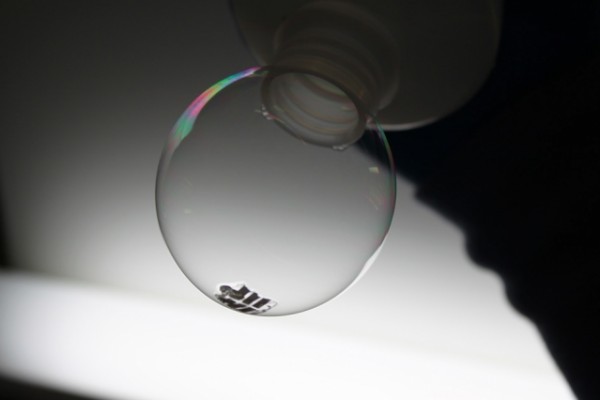By Ana Verayo, | February 29, 2016

The MIT team has achieved the thinnest and lightest complete solar cells ever made, they say.
Scientists have revealed an ultra thin and flexible solar cell that is so lightweight that it can rest comfortably on top of a soap bubble without bursting it.
This lightweight, photovoltaic cell is a solar energy technology breakthrough, measuring at only one fifth of a single strand of human hair, which can also be placed anywhere such as clothing, smartphones, balloons and other strategic places.
Like Us on Facebook
According to lead author of the study, Vladimir Bulović of the Massachusetts Institute of Technology, these new, thin and lightweight solar cells are truly light as they can even go unnoticed, upon placing them onto different existing structures. The team began their research for these efficient, portable solar cells last year.
These unique properties brought solar energy into a different level, as the versatility of these solar cells makes this an exciting venture into renewable energy. Researchers say that the key to this development is its protective coating, that supports its substrate and the actual solar cell itself.
In this new study, scientists were able to use vapor deposition techniques to merge the cell and substrate, where pressure from heat and other chemical reactions created a coating for this special material. The material used to coat the solar cell itself is known as parylene which is a flexible polymer that can be both used as a coating and a substrate.
By merging the substrate with the solar cell, this can provide protection to the support system from contaminants like dust. The main layer which absorbs light is covered with dibutyl phthalate or DBP, which is considered as an organic material.
The materials used are not new but the techniques that were used to fuse the materials together to develop a new solar cell made this successful, that makes it possible to manufacture and produce commercially. The light energy conversion capacity of these ultrathin and lightweight solar cells is also the same as regular solar arrays.
Bulović says that this new technique innovation led to the realization that substrate development can be grown at the same time with the device. Researchers say that these new solar cells can be a significant advantage in space explorations or at high altitude where weight is a crucial factor. However, researchers believe that it can take a while for these lightweight solar cells to be produced commercially, where the team needs to figure out ways to develop them fast enough.
This new study is published in the journal Organic Electronics.
-
Use of Coronavirus Pandemic Drones Raises Privacy Concerns: Drones Spread Fear, Local Officials Say

-
Coronavirus Hampers The Delivery Of Lockheed Martin F-35 Stealth Fighters For 2020

-
Instagram Speeds Up Plans to Add Account Memorialization Feature Due to COVID-19 Deaths

-
NASA: Perseverance Plans to Bring 'Mars Rock' to Earth in 2031

-
600 Dead And 3,000 In The Hospital as Iranians Believed Drinking High-Concentrations of Alcohol Can Cure The Coronavirus

-
600 Dead And 3,000 In The Hospital as Iranians Believed Drinking High-Concentrations of Alcohol Can Cure The Coronavirus

-
COVID-19: Doctors, Nurses Use Virtual Reality to Learn New Skills in Treating Coronavirus Patients







